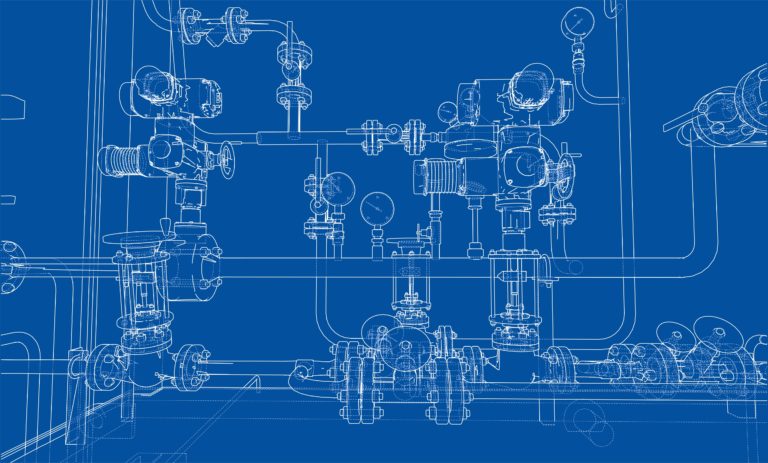Advantages of Edge Computing and What it Means to IIoT

Part 1 of 2: Advantages of Edge Computing and What it Means to IIoT
The Fourth Industrial Revolution is upon us. Technologies like centralization, software-defined networking, and IoT solutions have changed how industrial operators work. Many companies have found that they need to update their infrastructure to keep pace with the innovation and immense amount of new data flowing through their systems.
As data challenges mushroom, companies drive their digital transformation efforts forward and seek solutions at the intersection of aging infrastructure and new technology. The influx of data collected from IoT devices and sensors challenges legacy systems, where latency issues, bandwidth limitations, and network unpredictability can often lead to expensive consequences.
With the rise of Industry 4.0, the advent of industrial-grade edge computing is quickly becoming essential for facilities attempting to modernize while grappling with these data challenges.
Edge computing provides a solution
Edge computing is a distributed information technology (IT) architecture that processes data at the ‘edge,’ or periphery, close to the originating source. It enables workstations, manufacturing tools, non-connected equipment, and Industrial Internet of Things (IIoT) devices to capture and process data–without using the computing resources of a central database.
Industrial operations are increasingly reliant on edge computing to streamline, monitor, and control their equipment.
With IIoT, Industry 4.0, and COVID-19 fueling growth, organizations can benefit from this new technology. Below we will review the critical points of edge computing and its benefits for your organization.
Key points about edge computing
Edge computing represents a significant evolution of the internet. It’s an accelerator technology, enabling companies to take another step forward in their digital transformation journey.
Instead of relying on cloud data centers, edge computing stores data and processes it at or very near the source. It enables companies to adopt advanced applications, IoT devices, and equipment more widely by putting computation capabilities closer to the network edge, where data production occurs.
For example, the network edge in IIoT devices may be the processor within a smart Programmable Logic Controller (PLC). Likewise, a smart edge device attached to non-connected equipment may be considered the network edge.
Top 3 benefits of edge computing
1. Increased speed and lower latency
Speed and latency will play a key role in critical or potentially dangerous processes as manufacturers move towards remote and autonomous operations.
Many decisions made by human operators require split-second decision-making. Edge computing increases decision-making speed by allowing control applications to run closer to the operations — forgoing the need to send all of your data to the cloud and back for processing and computing.
2. Higher system reliability
The use of smart and connected devices has often assumed the availability of a strong network connection. But because many industrial operations are often remote and hard to reach by both humans and networks, the widespread adoption of new smart technologies has been a challenge for many manufacturers.
Edge computing addresses this problem by allowing applications to run locally without a constant internet connection. Operators can worry less about disruptions or disconnections because their edge devices can continue to operate and in some cases optimize, without a network or manual interventions.
3. Lower operational costs
Edge computing helps free up resources in the cloud for other needs, allowing for better connectivity, fewer bottlenecks, and opportunities for cost-savings. Because data is processed on the edge, fewer centralized data centers and clouds are required to store information from billions of connected devices worldwide. As a result, companies can save money on infrastructure and energy costs while improving efficiency by placing all processing closer to where it’s needed most: at the device level.
Placing computing power at the edge affords real-time business decision-making, equipment maintenance predictions, or any other actionable insights where human reviews and interactions are still necessary.
That’s a good thing.
Control applications at the edge
The ability to reduce cost while increasing reliability and speed makes adopting edge technologies attractive for any industrial operator. However, the most impressive benefit of edge computing comes from its ability to empower advanced control applications in remote locations.
By combining edge computing technology with low-code automation tools like those found on Kelvin’s Intelligent Control Software, operators can now deploy and run control applications in places where it would have been impossible before.
For tasks like a remote start-up and shut-down procedures or set-point adjustments, operators can create applications to mimic their own actions in various operating situations. This creates an opportunity to automate recurring or time-intensive tasks without in-person or manual interventions — increasing safety and freeing time for engineers to focus on higher-order tasks.
Enabling machine learning
The centralization of data and processing into one location has been a pervasive model in the IT industry. But as we move towards more distributed networks, it’s easier to deploy machine learning (ML) models on devices at the edge to improve effectiveness through self-learning.
ML at the edge improves autonomous operations by accelerating dynamic optimization of system processes. A step up from simple logic-based operations, ML solutions will overcome industry challenges such as interoperability and security compliance while opening up new frontiers. Ultimately, edge-enabled machine learning can deliver real business impacts by generating operational efficiencies, innovation, economy-of-scale opportunities, and new revenue models.
Step towards digital transformation
The edge computing revolution is happening all around us and will significantly impact how we operate our OT control systems in the future.
Edge computing is a powerful new technology with wide-reaching implications for organizations across industries. Applying this technology across individual IIoT networks increases operational efficiency and lowers maintenance costs.
An edge device strategy helps businesses take another major step towards their digital transformation. It reduces costs, improves security, and opens the door wider for scalability. Edge computing offers a new solution for the problem of aging infrastructures and new technologies that have collided in the past.
Learn how the Kelvin platform improves business continuity strategies and addresses asset health and preventative maintenance optimization at the edge.


